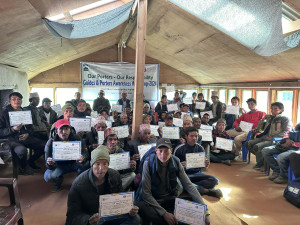Culture & Lifestyle
How exercise mitigates the effects of ageing
While working out may not reverse the biological processes, it strengthens the body and prevents life-threatening illnesses.
Post Report
Ageing brings with it numerous challenges. It drains you of your youthful energy, affects your internal systems and makes you feel worn down by what used to be lively and fulfilling. Joint pain and fragile bones might just be the beginning; a range of physical and mental conditions can follow. Ageing is ultimately unavoidable. For now, we must grapple with the significant consequences of growing old. Although we may not be able to postpone the inevitability of death, we can mitigate its most troublesome symptoms.
A study conducted by the National Library of Medicine revealed that engaging in physical activities can alleviate the negative effects of ageing on both physical and mental well-being. Higher levels of physical activity were associated with reduced risks of cardiovascular diseases, diabetes, and stroke. Additionally, overall mental and emotional well-being showed improvement with increased participation in exercise. While various factors influence the choice of appropriate physical activities, it is clear that exercise helps alleviate the challenges of an ageing body to some extent.
Dr Bishal Dhakal, a cardiologist in Kathmandu, emphasises the significant impact of exercise on older adults, leading to improved regulation of internal processes. He highlights that exercising enhances metabolism and helps maintain the body’s homeostasis. As individuals age, their homeostatic abilities weaken, and a lack of homeostasis can result in illnesses.
Dhakal states, “Exercising can greatly enhance the physical health of older adults, especially when their homeostatic control is diminishing. Various diseases, including those related to the cardiovascular system, can be prevented with sufficient exercise.”
Sujan KC, a personal trainer at Moksha Fitness Studio, describes exercising as a fulfilling and beneficial form of recreation for elderly adults. “As we age, our muscles and bones weaken, and we gradually lose muscle mass. While working out may not reverse these biological processes, it strengthens the body and prevents life-threatening illnesses,” explains KC.
Recognising that everyone is unique, and the effects of ageing manifest differently in individuals, it is crucial to tailor workouts based on the specific needs and limitations of the body. This consideration extends to elderly adults, whose bodies cannot endure strenuous workouts. KC emphasises that all clients, including older individuals, undergo an assessment phase to understand their physical capabilities before designing a workout routine.
“I would suggest older adults to focus on body weight exercises and light weight training. You do not want to put your body through hoops of training that will put too much negative pressure on your muscles and bones. Some older adults have knee problems, and I absolutely would not recommend any squats to them. These are all things to keep in mind for an effective workout session for the old,” says KC.




 12.12°C Kathmandu
12.12°C Kathmandu














